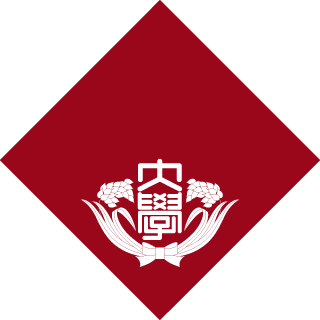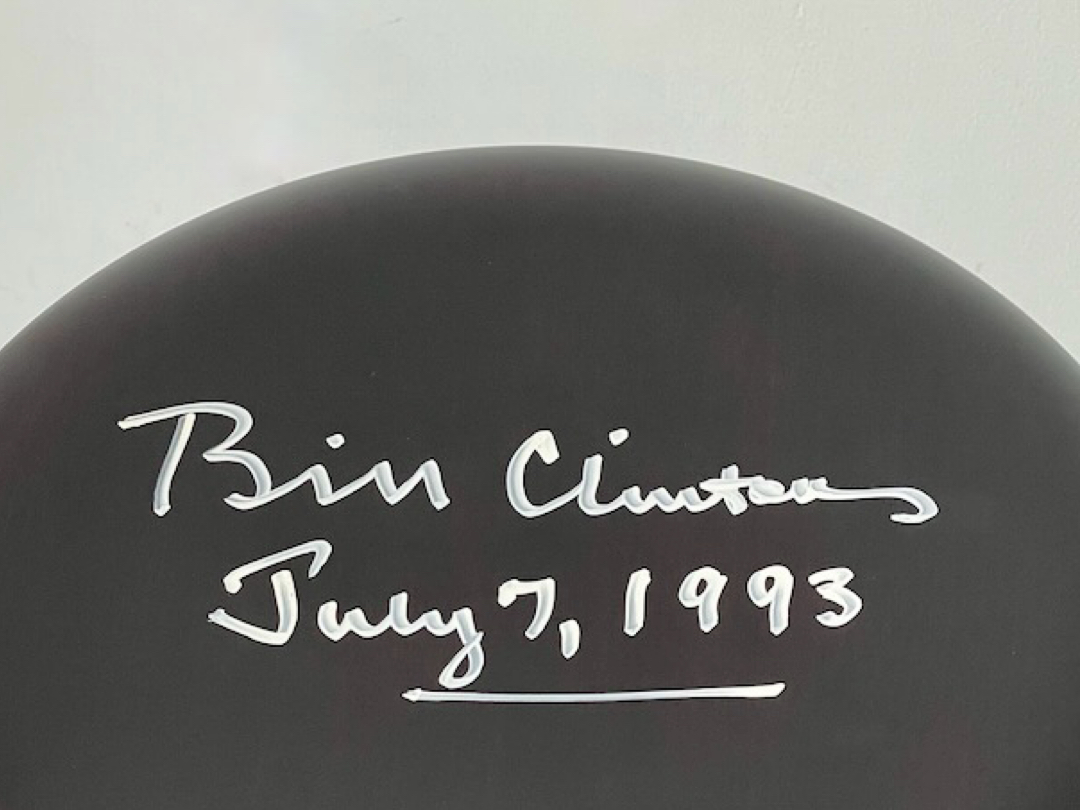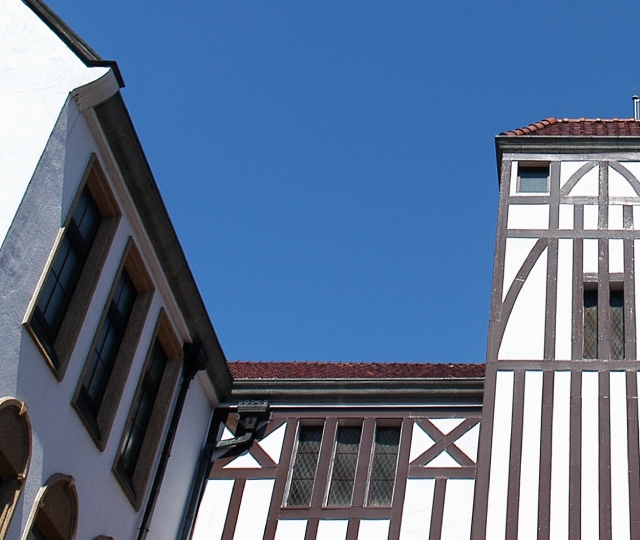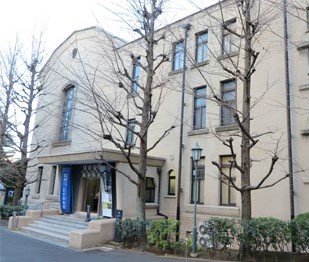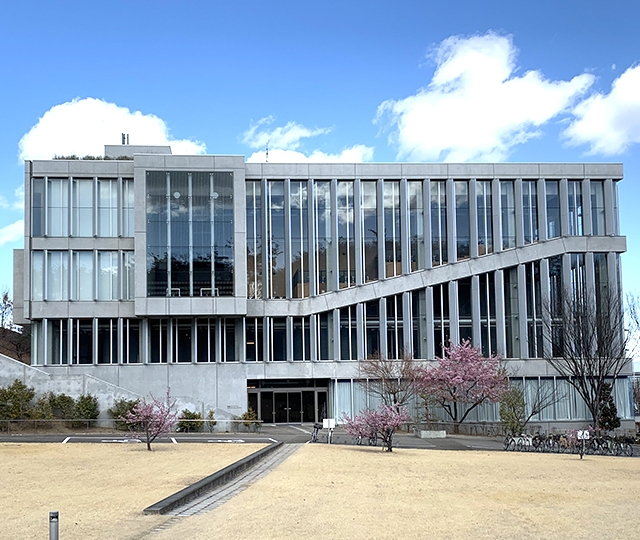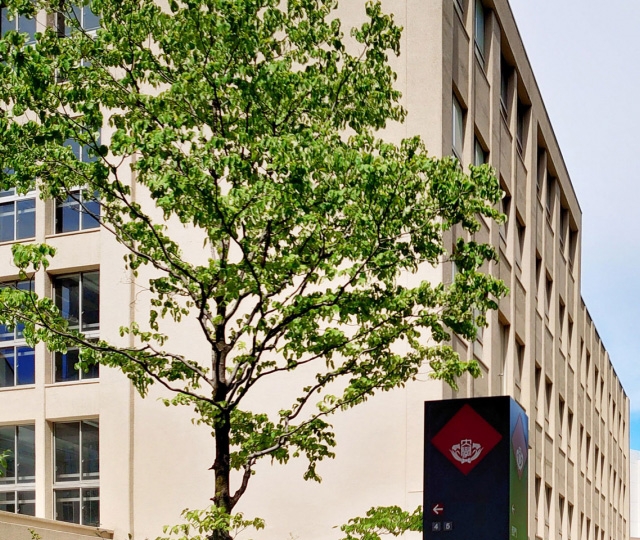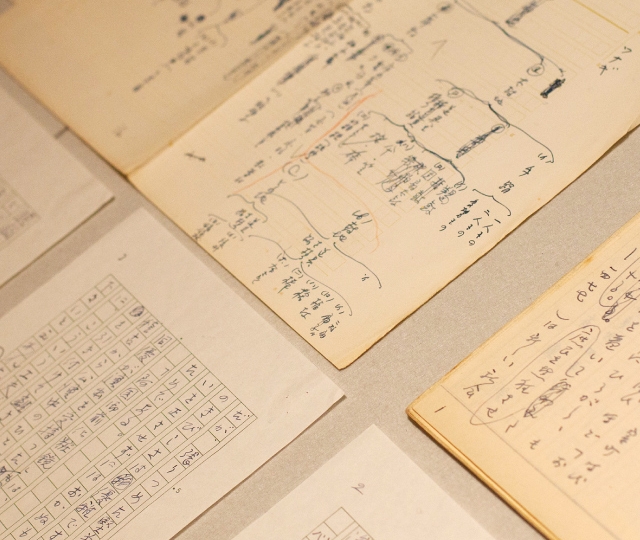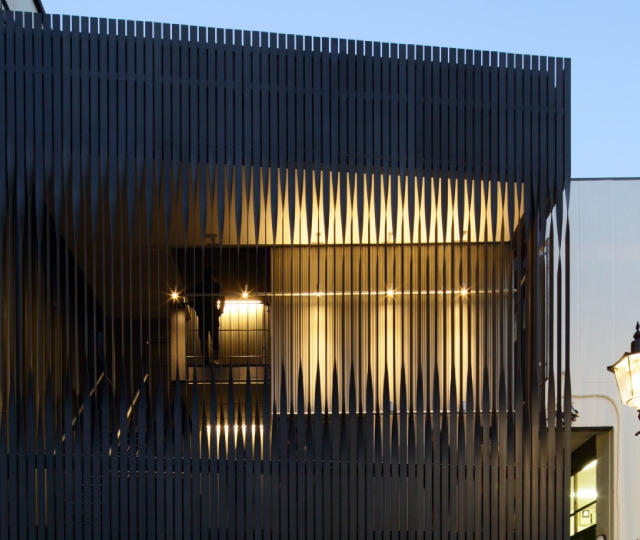- Featured Article
The Chair No Longer for Sitting
Remembering President Bill Clinton’s Visit to Waseda University
Mon 07 Jul 25
Remembering President Bill Clinton’s Visit to Waseda University
Mon 07 Jul 25
Every item in the Waseda University Archives is irreplaceable in its own right. Each holds a unique background, and no two are the same. They are all precious “forms” that convey the memories of their time and the people who lived in it.
The chair used by President Bill Clinton, which we introduce here, is one such item. Though made of wood, it is lightweight and stands approximately 76 centimeters tall. On the seat is the signature of Bill Clinton, the 42nd President of the United States. Beneath the signature, “July 7, 1993” marks the date when President Clinton and the First Lady visited Waseda University.
![General Affairs Division Collections, transferred in AY2012<br />
Item 1: [Chair]](https://www.waseda.jp/culture/archives/assets/uploads/2025/07/20250707clinton2.jpeg)
General Affairs Division Collections, transferred in AY2012
Item 1: [Chair]
![General Affairs Division Collections, transferred in AY2012<br />
Item 1: [Chair]](https://www.waseda.jp/culture/archives/assets/uploads/2025/07/20250707clinton3.jpeg)
General Affairs Division Collections, transferred in AY2012
Item 1: [Chair]
![General Affairs Division Collections, transferred in AY2012<br />
Item 1: [Chair]](https://www.waseda.jp/culture/archives/assets/uploads/2025/07/20250707clinton1-940x1054.jpeg)
General Affairs Division Collections, transferred in AY2012
Item 1: [Chair]

The Signature of Bill Clinton – clinton4.nara.gov, public domain, link
“A truly historic day for Waseda University”
An extra edition of Waseda Weekly, dated July 15, 1993 and published by the Waseda University Student Affairs Section, reported on the day’s events as follows:
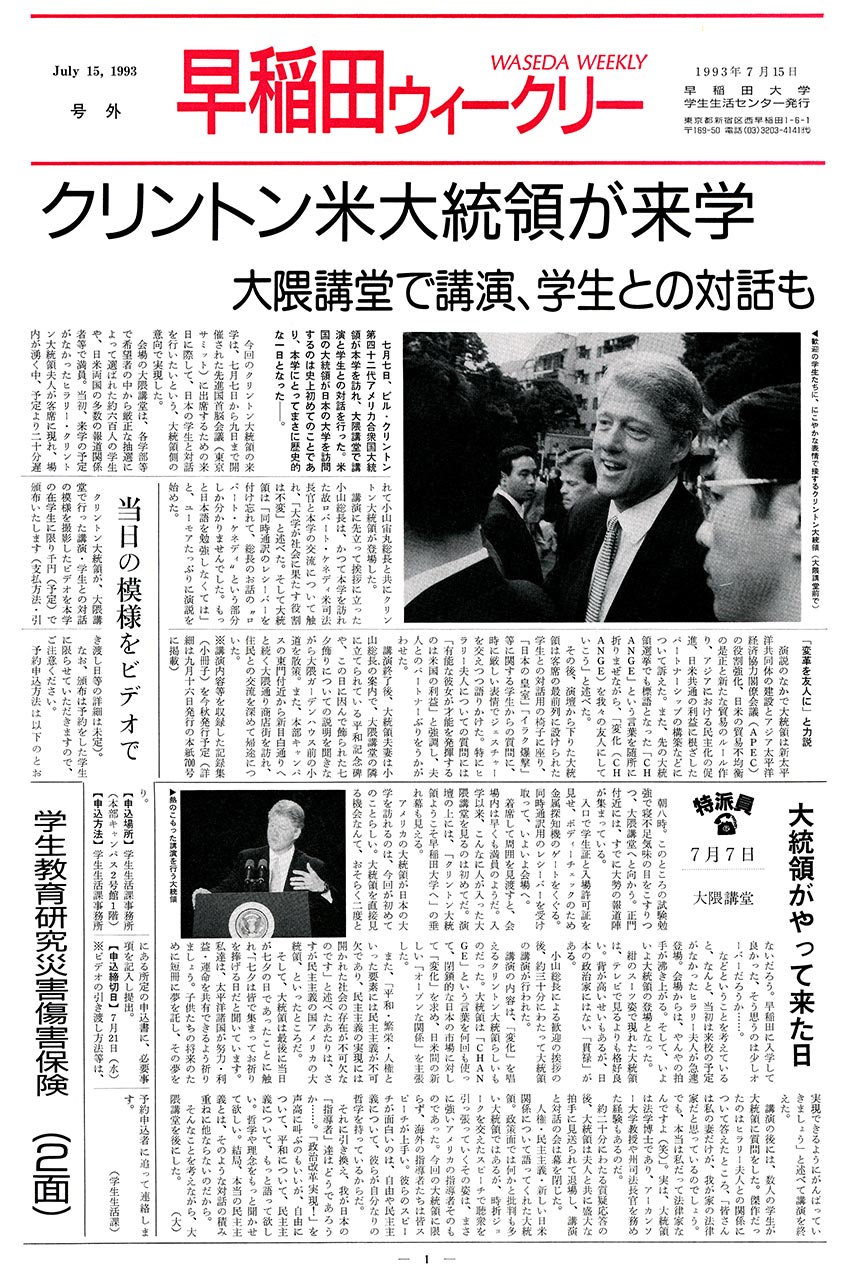
Waseda Weekly Extra Edition
(Published by the Student Affairs Section, July 15, 1993)
President Clinton of the United States visits Waseda University
Delivers speech at Okuma Auditorium and engages in dialogue with students
On July 7, Bill Clinton, the 42nd President of the United States, visited Waseda University. At Okuma Auditorium, he delivered a speech and participated in a dialogue with students. It was the first time in history that a sitting U.S. president had visited a Japanese university—a truly historic day for Waseda.
President Clinton’s visit was arranged in response to his own desire to engage in dialogue with Japanese students, coinciding with his trip to Japan for the G7 Summit (Tokyo Summit) held from July 7 to 9.
Okuma Auditorium was packed with an audience of approximately 600 students, selected by lottery from various departments, as well as numerous members of the press from both Japan and the United States. Although her attendance had not been announced, First Lady Hillary Clinton made a surprise appearance in the audience. Amid the excitement, President Clinton entered the hall together with Waseda University President Chumaru Koyama, about twenty minutes behind schedule.
Before the main speech, President Koyama addressed the audience, recalling the visit of the late U.S. Attorney General Robert F. Kennedy to Waseda, and stated that “the role of the university in society remains unchanged.” President Clinton then opened his remarks with humor: “I forgot to put on my simultaneous interpretation headset, so all I understood was ‘Robert Kennedy’ in President Koyama’s speech. I must study Japanese more.”
“Let’s make change our friend,” he emphasized.
In his speech, President Clinton spoke about the creation of a New Pacific Community, strengthening the role of APEC, correcting the U.S.-Japan trade imbalance and establishing new trade rules, and promoting democratization in Asia. He also advocated for building a partnership rooted in the shared interests of both nations. Echoing the slogan from his presidential campaign, he frequently invoked the word “CHANGE,” urging the audience to “make change our friend.”
After his speech, the President stepped down from the podium and sat in a chair placed at the front of the stage for a student dialogue session. He responded to questions from students on topics such as the Japanese Royal Family and U.S. airstrikes in Iraq, sometimes with serious expressions and expressive gestures. In particular, when asked about the First Lady, he stressed that “it benefits the United States to have such a talented woman fully utilizing her abilities,” revealing a glimpse of their partnership.
After the event, guided by President Koyama, the Clintons strolled along the path in front of Okuma Garden House, where they viewed the Peace Monument and traditional Tanabata decorations displayed in honor of the day. They also visited the Okuma-dori shopping street, which stretches from the East Gate of the main campus toward Shin-Mejiro Street, where they interacted with local residents before departing.
The episode involving Robert F. Kennedy, which President Clinton had missed due to not wearing his interpretation headset, was fondly recalled by many when Caroline Kennedy, then U.S. Ambassador to Japan, visited Waseda in March 2015.
Remembering JFK’s Legacy: Bill Clinton, Caroline Kennedy and Shinzo Abe visit Waseda
The Moment of Use, Captured on Film
Footage of this event is preserved in the U.S. National Archives. After delivering his speech, President Clinton descends from the stage and takes a seat in this very chair to begin his dialogue with students. The cut is brief—but within it, the chair is clearly visible, documented in use.
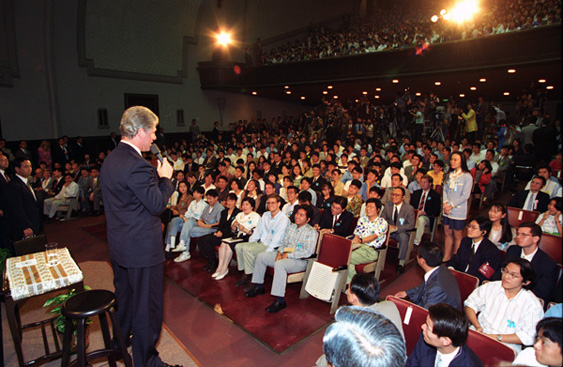
Photograph of President William J. Clinton Addressing Students and Faculty at Waseda University in Japan (NAID: 2581412)
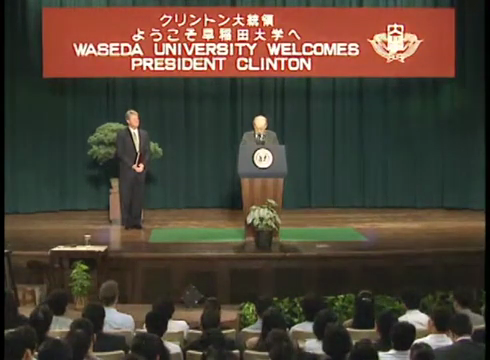
President Clinton's Address at Waseda University (NAID: 485327489)
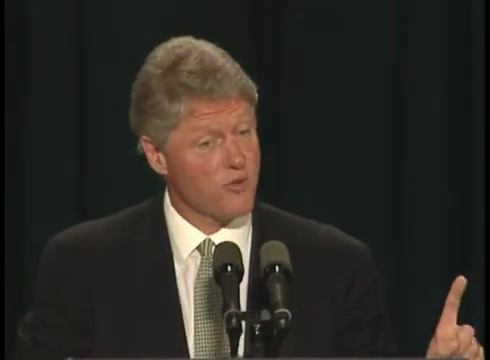
President Clinton's Address at Waseda University (NAID: 485327489)
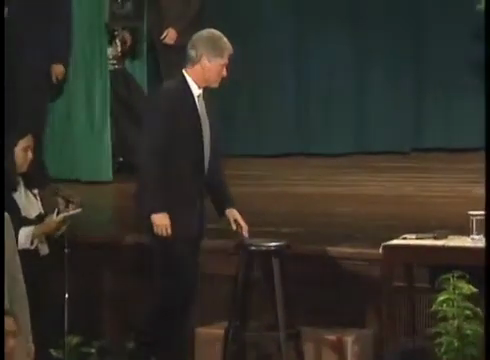
President Clinton's Address at Waseda University (NAID: 485327489)
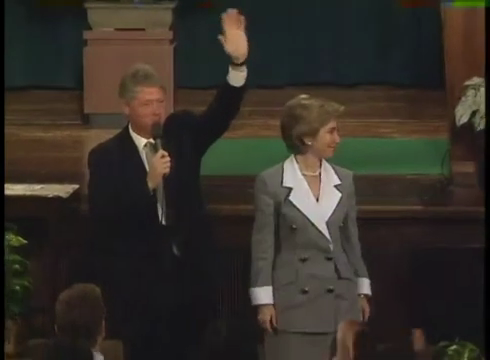
President Clinton's Address at Waseda University (NAID: 485327489)
- LINK
This chair was likely an ordinary piece of mass-produced furniture—lightweight, functional, and commonly found in many settings. Yet now, it carries with it a record: that President Bill Clinton sat in it, that his moment of use was captured on film, and that his signature, along with the date, was inscribed on the seat. Layer by layer, these traces accumulate and quietly transform a common chair into a historical artifact. And through that transformation, it becomes something no one would dare sit on again!
There is no singular turning point or definitive moment when this ordinary chair began to be treated as a “historical artifact.” Rather, it may be more accurate to say that its meaning and character gradually shifted as traces slowly gathered. A seemingly insignificant object from daily life, through human actions and records, becomes a vessel of memory—quietly preserved for the future. In the stillness of the archive, memory ferments—until the ordinary becomes rare.
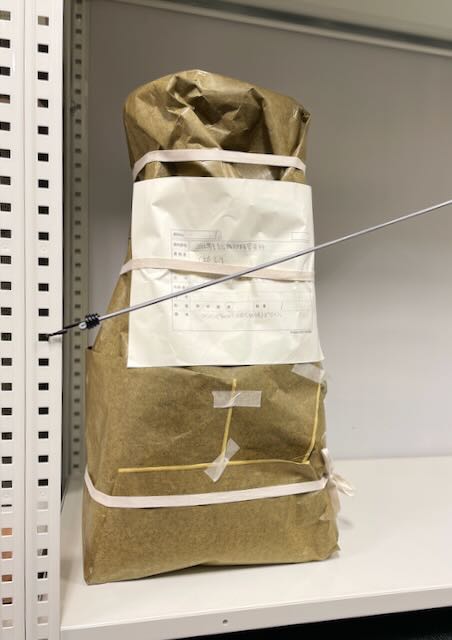
The chair is packed and stored in the archives. When will it be unpacked next time?
